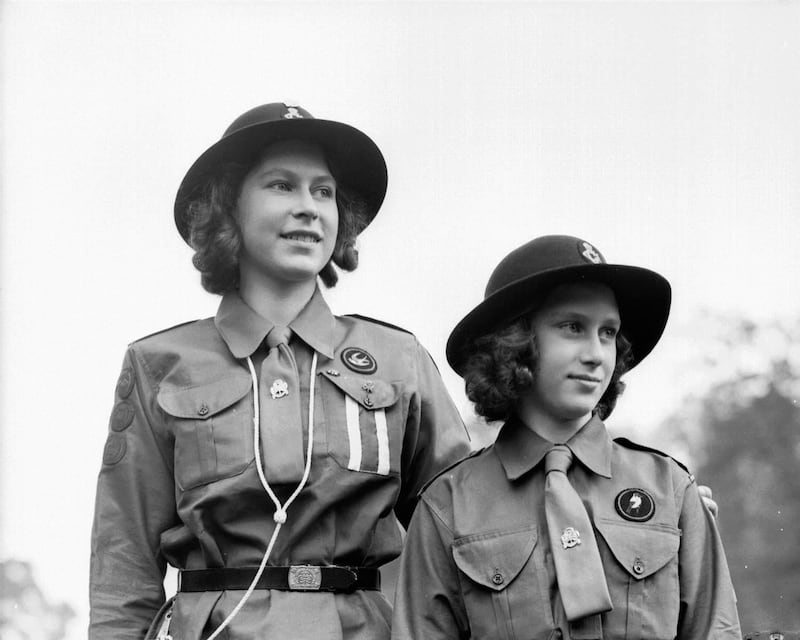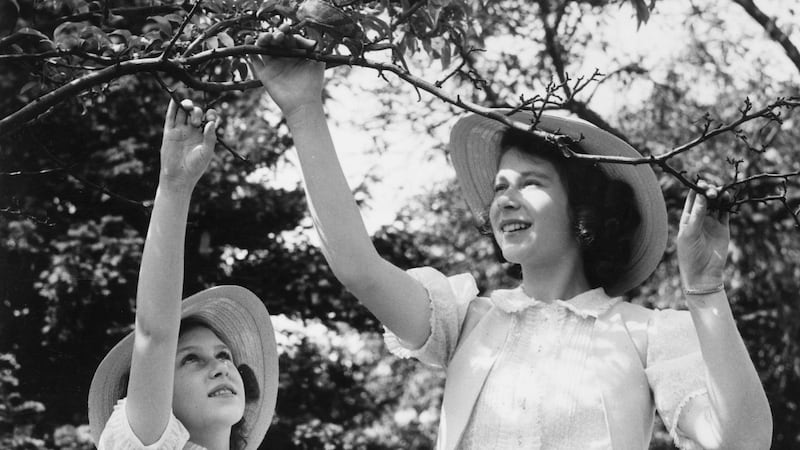My mother was a royalist to her housework-worn fingertips. It was not the pomp and circumstance of the court of Queen Elizabeth II that captivated her, but the opposite. As a lower-middle-class mother of three in a small Irish town, she was enchanted, and surely comforted, by the studied ordinariness of the Queen and her family. True, Prince Philip was too handsome if not for his own good then certainly for the good of others, and looked and sounded a bit of a rake. But then, he was a man, and what was there to be done with men except humour them, and put up with their selfish and irresponsible ways.
How we admired the cut-glass accents of the newsreaders on the BBC Home Service
English, or, as the priest in the pulpit darkly had it, cross-channel newspapers were not read in our house. Word of royal doings came to us chiefly by way of the wireless. How we admired the cut-glass accents of the newsreaders on the BBC Home Service – what a wistful light would suffuse my mother’s eyes when Alvar Lidell came on to assure us that the Queen was in her counting-house and all was right as a ribstone pippin.
And then when we went to the pictures we had those noisy bulletins from Pathé News that came on before the main feature. Such a fever of excitement Bob Danvers-Walker would whip himself into when the Queen and Prince Philip – in Bob’s breathless eagerness the two royals became melded into one, as TheQueenandPrincePhillip – were transferring to Balmoral for their summer hols, or setting off for foreign parts aboard the Royal Yacht Britannia. Bob always spoke in Capital Letters.
Trailing in the wake of the royal couple would come Prince Charles and Princess Anne, bless ’em. Charles had a haunted look even then – we are at the close of the 1950s, and putting a cautious toe into the new-fangled 1960s – while sturdy Princess Anne was already a centauress. They never really looked like children, at least not children of the kind familiar to small-town Ireland. They were always preternaturally well turned-out, in their neat little overcoats and spotless, sensible shoes, their faces scrubbed almost to featurelessness by the royal nanny and the partings in their hair seemingly etched into their skulls with an engraving tool.

My mother worried for poor Charles when it was announced that he was to be sent off to that Gordonstoun place. What was wrong with Eton, where all the toffs sent their future lords and masters? She just knew, my mother did, that Charles was not going to be happy at Gordonstoun. Was it a real place at all? The name had a Hollywoodish ring to it, like Camelot, or Brigadoon. Charles himself referred to it as Colditz in kilts. Who would be a prince?
And of course Princess Margaret was a perennial worry. Oh, she was a terror, that one. She might wear headscarves and twinsets and tartan skirts run up from horse-blankets, just as her sister did, but everyone knew she belonged in sheer silk gowns with plunging necklines, mink stoles and stiletto heels. What was to become of her? She had wanted to marry that nice group-captain whatyoumaycallhim, but from the start it was a doomed romance, as we all knew. Why, the fellow was not only a commoner, but a Divorced Man into the bargain! Not to be countenanced, not by the Queen and the Archbishop of Canterbury, and not by my mother, either.
She had, my mother, a direct conduit to news from the palace through Woman, and the inexplicably less favoured Woman’s Own. In the glossy pages of these home comforts for ladies, my mother accompanied TheQueenandPrincePhillip on visits to village fetes, on hikes through royal parks and woodlands, or to the races, where Her Majesty’s latest three-year-old seemed always to be the hot favourite. There were more exciting pastimes, too, such as stag hunting in the Highlands, or safaris in Our Far-Flung Colonies.
The story of the Windsors – who were, as we remember, called Saxe-Coburg-Gotha until 1917 – is a fairytale at once magical and mundane
What right royal times! Far off indeed was the possibility of a dark face among the smiling pales on the balcony at Buck House, not to mention a prince with a head of flaming hair among so many melanochroi – where did that gene sneak in from?
Of course, even in the royal heyday there were sticky patches, though they were nothing compared to the scandals in which the family has managed to mire itself over the course of its recent anni horribili. That Margaret, now, she just would not let up, until in the end she went and married a photographer, a common or garden snapper, for heaven’s sake. She was also known to take the occasional drink, but that was all right, since it was also well known that the Queen Mum was partial to a more than occasional G and T.
All the same, for my mother, and for so many mothers like her, the Queen and her family represented, in those far-off days recorded by the Lidells and the Danvers-Walkers and the scribes of Woman and Woman’s Own, the very ideal of respectability. The story of the Windsors – who were, as we remember, called Saxe-Coburg Gotha until 1917 – is a fairytale at once magical and mundane, set not at the foot of a forest in darkest mitteleuropa, but just over there, a ferry-ride away, in Ruritania-on-Sea.

The royal family is a dulled-down example of fantastic privilege lightly worn. The Windsors cunningly eschew the trappings of majesty except on those ceremonial occasions when the public demands it. Otherwise they muddle along just like the rest of us. As we now know, nothing is more commonplace than a shooting weekend at Windsor.
And there is another R-word that applies: reliability. After the debacle that was Mrs Simpson, she of the Singapore Grip, and the abdication of which she was the cause, did not King George and his Queen Elizabeth, the Queen Mother, not represent a rock upon which the empire itself might rest in tranquil security? Did they not, the King and Queen, pluckily insist on remaining at Buckingham Palace during the Blitz in the autumn of 1940, and the little princesses with them, so as to demonstrate their solidarity with Londoners in their time of trial, pain and loss?
But ah.
I wonder what my mother would have made of a story of wartime intrigue told to me some years ago by a friend of mine from a town in the midlands, let us call it “Clonmillis”.
One Sunday afternoon in the 1970s my friend took his elderly father for a drive in the countryside. Along the way they passed by the gates of a great mansion, “Clonmillis Hall”, let us say.
“Ah,” said my friend’s father, “that’s where the princesses stayed during the Blitz.”
Only a handful of people knew about the princesses – including the British ambassador, of course, and taoiseach Éamon de Valera
Naturally, my friend was fascinated. Was his father sure about this? Oh, yes, the old man said. While their parents remained at Buckingham Palace, the two girls, aged 14 and 10, were transferred in secret from London to the Irish midlands, where they lodged in the care of a local squire, a crusty but dependably discreet bachelor.
My friend remained doubtful. How was his father privy to this remarkable and potentially explosive information? Simple, said the old man. Only a handful of people knew about it – the British ambassador, of course, and the taoiseach, Éamon de Valera, and his wonderfully titled minister for the co-ordination of defensive measures, Frank Aiken. In Clonmillis, the man who would have been responsible for the security of the princesses was a heavy drinker and therefore not to be trusted with so sensitive a secret. Instead, they told his second-in-command, who was, of course, my friend’s father.
Efforts have been made over the years to confirm the authenticity of this fascinating wartime episode. At a dinner one night in Dublin my friend found himself seated beside a venerable English lady who was rumoured to have worked in British intelligence during the war. He related to her what his father had related to him. She was fascinated, and promised to make inquiries when she returned to England. He saw her again in Dublin some months later, but when he approached her she responded with a frosty smile and moved swiftly on. The Official Secrets Act still binds.
When my friend first told me the story, I thought it would make a wonderful film script, so I travelled to London and pitched the idea to a producer with BBC Films. He was enthusiastic, terms were agreed, a contract was drawn up. Then Paul Burrell, Princess Diana’s butler, published his controversial memoir of his years with the royal family, and at once BBC Films took fright and cancelled the project.
Rum. Distinctly rum.
During the queen's visit to the Republic in May 2011, Her Majesty disappeared from public view for an entire afternoon. Where did she go to?
Then there is the mysterious gap in the queen’s visit to the Republic in May 2011, when Her Majesty disappeared from public view for an entire afternoon. Where did she go to? Could she have been paying a nostalgic visit to Clonmillis Hall and the scenes of her 1940 stay?
We shall never know the facts of the matter, or even if they are facts and not an old man’s harmless fancies. My friend’s father is long dead, and there is no one to substantiate his story of The Secret Guests. But then, there is no one to deny it, either. One might put the question to Her Majesty herself, but she is busy with other matters at the moment.
And what would my mother think of all this? Although she was no friend of the Big House, she would surely be thrilled by the thought of the imperilled princesses being spirited across the Irish Sea to a place of safety in rural Ireland. I wish she could have read my book.
The Secret Guests by BW Black is published by Penguin


















